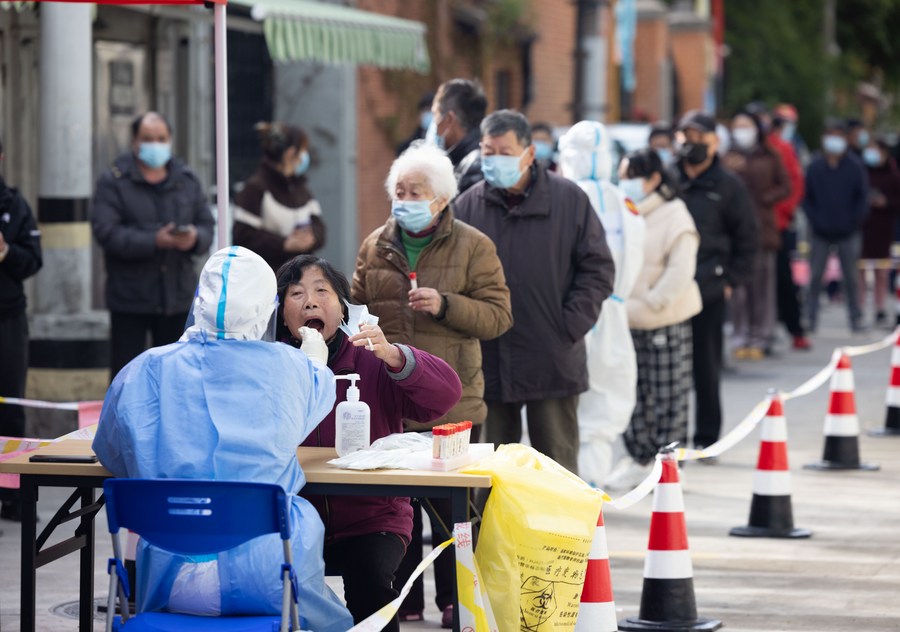
RESOLUTE, SWIFT MOVES
Chinese Vice Premier Sun Chunlan on Saturday urged resolute and swift moves to stem the spread of COVID-19 in Shanghai as quickly as possible.
"It is an arduous task and huge challenge to combat the Omicron variant while maintaining the normal operation of core functions in a megacity with a population of 25 million," Sun said.
She urged that nucleic acid testing capacity and the organization of mass testing be improved as soon as possible to get a clear picture of the epidemic situation.
The megacity is under temporary closed-off management. After the completion of a mass antigen testing on Sunday and citywide nucleic acid testing on Monday, Shanghai has decided on Wednesday to launch a new round of mass testing as a fresh effort to cut off the transmission in communities and contain the latest COVID-19 resurgence.
Over 60 venues, including the over 150,000-square meter Shanghai World Expo Exhibition and Convention Center, have been converted into makeshift hospitals.
The National Exhibition and Convention Center covering a total construction area of 1.47 million square meters, is also being turned into a quarantine site. Upon completion, the center with a planned capacity of 40,000 beds is expected to act as the biggest such hospital for those testing positive for COVID-19.
In the early hours of Monday, the China Flower Expo park in Chongming District opened as a makeshift hospital with over 2,700 beds and received the first batch of mild cases and asymptomatic carriers. The medical teams are from hospitals in Shanghai and Anhui Province.
After registration, the medics will confirm one by one the physical condition of the cases -- whether they have underlying diseases, developed symptoms or have been vaccinated, and make further arrangements and nursing plans.
Zhu Minghua, from the First Affiliated Hospital of Anhui Medical University, meticulously arranged the treatment of patients. "We must pay close attention to the possible emotions of all the people here," noted Zhu.

MUTUAL SUPPORT
The arrival of medics from outside Shanghai not only enhances the city's treatment ability but also greatly improves the detection capacity.
With the joining of 104 medics from central China's Hunan Province on Sunday, the testing capacity of a lab under Shanghai Biotecan Pharmaceuticals Co., Ltd. has been significantly boosted.
"As our cooperation goes smoother, we hope our daily testing capacity can soon exceed 100,000 tubes," said Wu Shouxin, head of the lab.
Zhang Yuetao and her colleagues headed for Shanghai from the neighboring Zhejiang Province at about 2 a.m. Monday. They were responsible for taking nucleic acid samples for 31,120 residents in Songjiang District before noon.
The seemingly impossible task was completed an hour ahead of schedule.
"Shanghai residents are very cooperative, even the children behave so well," said Zhang. "Zhejiang and Shanghai are members of one family and we should work together to win the war without smoke."
Residents in Shanghai flooded social media platforms to express their gratitude. Many burst into tears after seeing medics from across the country come to help. "Thank you so much for coming all the way to help us," said an elderly after having the nucleic acid sample taken at home by medical staff from Wuhan.